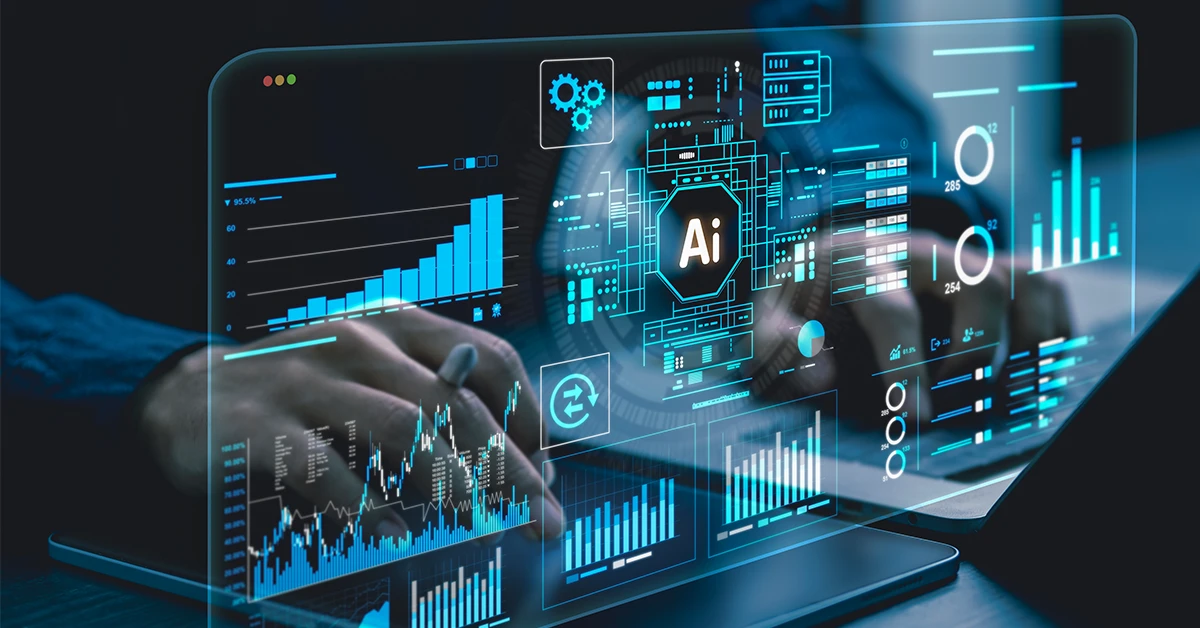Over the past decade, operational technology (OT) systems have become increasingly IP-connected and more vulnerable to cyber threats. As the lines between traditional IT risk management and operational risk management continue to blur, it’s critical for CISOs to incorporate OT cyber risk into their enterprise security strategy.
What Is Operational Technology (OT)?
First, let’s define what “operational technology” is. OT encompasses the hardware and/or software that controls or monitors assets operating a process in the physical world. This can include everything from traditional industrial control systems (ICS) to Internet of Things (IoT) devices that are involved in a physical process.

When most people hear the term “OT”, they associate it with factories and energy grids, and that’s true. But today, you can find operational technology in almost every industry. This concept covers anything that is controlling something in the physical world. Things like HVAC systems, escalators, elevators, physical access control mechanisms, drones, cranes, autonomous robots, and more are all considered “OT”.
Important Nuances to Consider for OT Environments
While an integrated approach delivers advantages, CISOs should be aware of key differences when managing cyber risk in OT environments:
- Legacy devices and proprietary protocols are common in OT, making asset discovery and behavior profiling more difficult. Using data collection methods that were purpose-built for OT systems is the best ways to get the asset and network information you need, while ensuring that there is no process disruption.
Many OT devices and controllers also have limited computing power and resources, so choose a lightweight endpoint security solution specifically engineered for this use case.
- Managing software vulnerabilities across a mix of OT platforms and customized applications is a huge challenge. Not only does the volume of OT and IoT devices make them harder to manage than IT devices (billions vs. millions), but patching also can’t be automated like it can in IT systems.
Solutions that can help you prioritize what vulnerabilities to focus on based on the likelihood and impact of a compromise are the most effective way to manage vulnerabilities in OT. Using a traditional IT vulnerability management solution for these environments will not copy/paste well.
- OT systems prioritize safety and availability over confidentiality. Monitoring should focus on recognizing anomalies more than strict policy adherence. OT environments have a combination of real-time processing needs and data historian servers. Monitoring tactics must align to support time-series data as well as steady-state analysis.
3 Business Benefits of Integrating OT Into Enterprise Risk Management
Improved visibility, detection and control for OT systems enables CISOs and their teams to manage cyber risk holistically across the enterprise to reduce the risk of unplanned downtime, ensure the safety of people and the environment, and prepare for increasing cybersecurity regulations globally.
1. Reduce Unplanned Downtime in OT Systems
While cyberattacks have traditionally targeted the data inside IT systems, the convergence of IT and OT has raised the stakes. Bad actors now have pathways to disrupt physical processes at manufacturing companies, energy companies and other critical infrastructure providers.
Without the appropriate security controls and monitoring in place, attacks against these systems can have devastating impacts on revenue from service interruptions and/or product defects.
2. Ensure the Safety of Humans and the Environment
In industries like energy and transportation, a cyberattack on OT systems can potentially put lives and/or the environment at risk. When devices controlling, for example an oil rig, a chemical refining process or the travel of a train, fail or are forced into an unsafe state, injuries or environmental damage can occur.
To promote safety, monitoring for changes in operational devices allows security teams to recognize dangerous malfunctions or manipulations and intervene before they create a safety or environmental hazard.
3. Future-Proof Cybersecurity Policies for Increasing Regulations
For industries facing increasing regulatory oversight, including energy, critical manufacturing, and transportation, using strong, scalable cybersecurity controls for OT environments will become critical to maintain compliance with standards like NERC CIP, the NIS2 Directive, the SOCI Act and the new SEC Rules on Cybersecurity.
Although most regulations still have gaps in explicitly addressing IoT and OT, that’s expected to change soon as regulators and auditors catch up with the changing digital landscape. Getting ahead of pending regulations now allows for smoother adoption later.
3 Technical Benefits of Integrating OT Into Enterprise Risk Management
With rapid insight into early stages of device or network anomalies, security teams can take actions to stop malicious software from spreading between IT and OT Infrastructure through linked pathways. Integrating OT assets and networks into existing security monitoring delivers the asset management, threat intelligence and behavioral analytics necessary to prevent or detect cyber incidents before material impacts occur.
1. Unified Asset Management
In industrial environments, OT and IT systems typically maintain separate data sets. OT systems track detailed asset information for production, while IT systems, like maintenance management, track higher-level business data. This separation can hinder effective communication and risk management decision making between teams.
By blending OT asset data with supplemental IT details, security and operations teams gain a unified view of their vital production assets. This provides essential context for smarter security decisions and fosters better collaboration. The result is improved risk management and more uptime.
2. Early Detection of Threats and Anomalies
Incorporating OT monitoring into SIEMs and analytics tools allows for cross-pollination of threat intelligence. Security teams can more quickly detect compromises or recognize attack patterns spreading from IT to OT or vice versa.
Continuous monitoring also enables earlier intervention and provides a snapshot of what was occurring in the OT network or asset leading up to a security event to facilitate faster response and recovery.
3. Efficiency Gains in Process and Technology
Companies can maximize their ROI on security tools by feeding data from both IT and OT environments into their existing SIEM, analytics, and monitoring platforms. It allows them to get more value from the technology they already have. Integrating programs on the process side also removes duplicate efforts between IT and OT teams.
As CISOs look to bolster their security postures across the operational environment, taking an integrated approach to continuous security monitoring that encompasses both IT and OT infrastructures will achieve significant improvements in the enterprise risk management strategy. With improved OT asset visibility and situational awareness across the enterprise, organizations can achieve greater safety assurance, avoid costly disruptions, and stay prepared for the changing global regulatory landscape.












